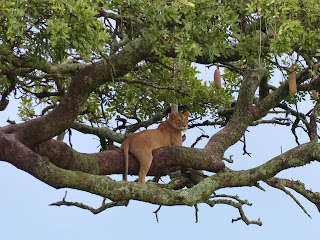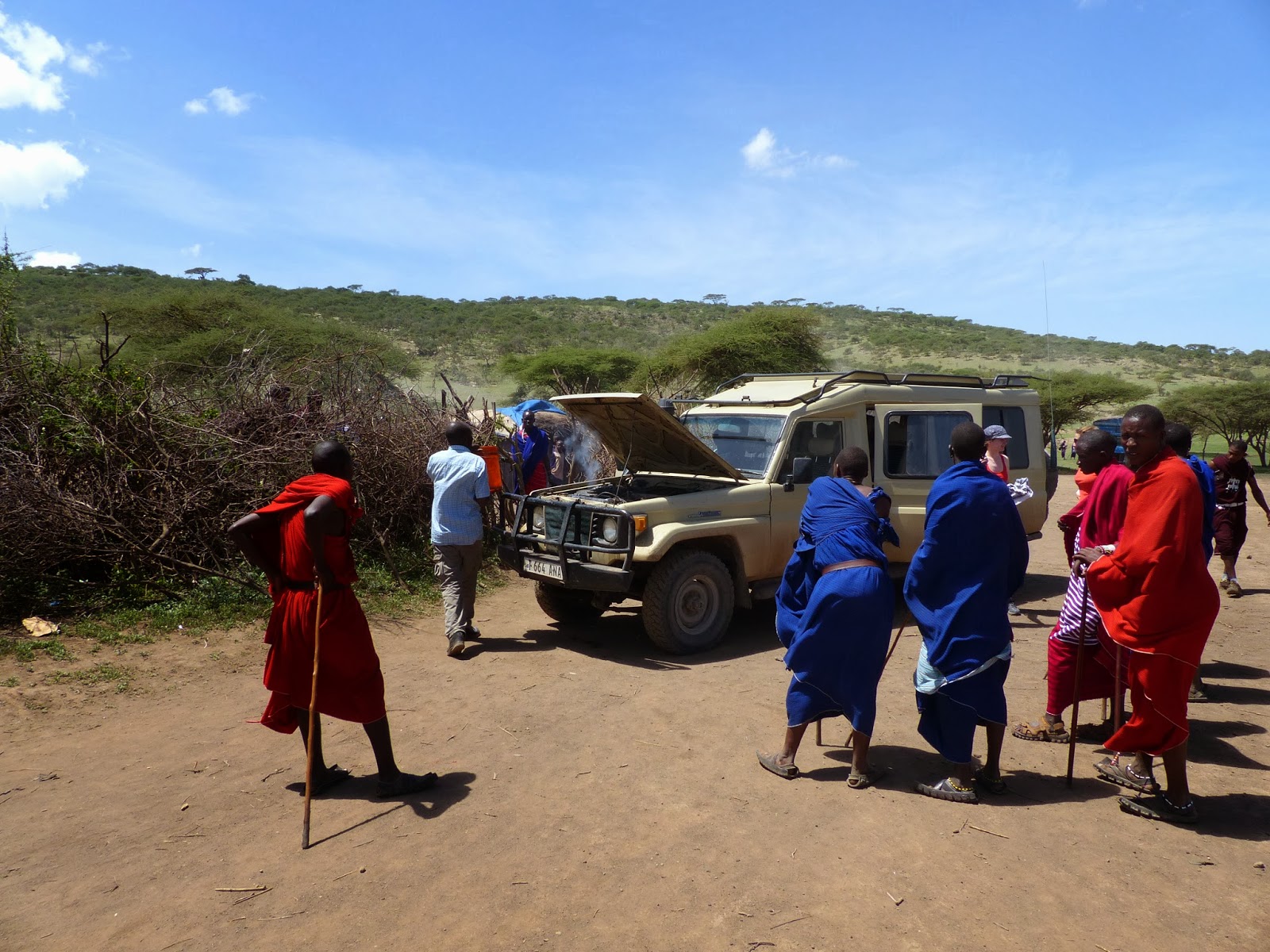During five days we visited four National Parks and covered
something like 2000 kilometres on the most bumpy roads that we've
ever drove on (or rather been driven on). The name of Serengeti -
endless plains in Maasai language – reflects very well its
vastness. This park has one of the largest concentrations of wild
animals on the planet and features spectacular migrations, we
witnessed the one of wildebeests and zebras. Ngorongoro Park borders
Serengeti and its key point is an 18 kilometre wide crater (which is
actually one of the largest calderas (collapsed volcanos) on the
planet). At an altitude of more than 2000 meters it offers
spectacular mountains views and great wildlife encounters. Ngorongoro
crater, including its rim, has been voted our favourite place. Why?
For many reasons. Scenic mountain landscapes in an intense green colour, very pleasant temperature, and most importantly of all -
on a relatively small space we could see loads of wildlife (including
black rhino, lions, flamingos, hippos, zebras, etc – see the photos
below). The fact that Ngorongoro is so compact, has one more
advantage, it saves you lot of ass pain, as you don't need to drive so much on dirt roads. Tarangire Park features hoards of elephants -
even Ieva that visited already quite a number of game parks, admits
that she's never seen so many of them. On top of elephants, giraffes,
antelopes, warthogs, and many others, Tarangire also is famous for
baobab trees. And the last but not least – Lake Manyara park
comprising an evergreen forest and a large, salty mineral-rich lake
full of flamingos. Manyara is beautifully set at the foot of the
Great Rift Valley. The Rift Valley is an attraction in itself –
it's a super long trench 6000 km long separating two blocks of the
Earth's plates that runs from Syria to
Mozambique. Lake Manyara Park is full of monkeys – baboons, vervet
and black monkeys; it also offers memorable views of giraffes, zebras
and wildebeests in the pink background of flamingos feeding in the
lake.
That's the narrative, though the pics speak the best for themselves :)
That's the narrative, though the pics speak the best for themselves :)































No comments:
Post a Comment